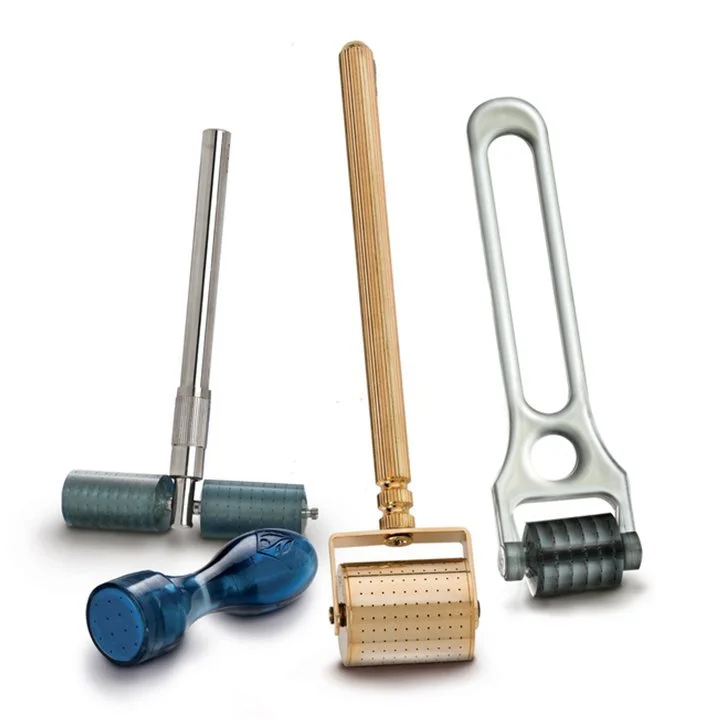What You Need to Know About Microneedling
Microneedling, also called Collagen Induction Therapy, is a non-invasive treatment that uses fine, sterile needles to lightly puncture the skin. Microneedling is used to treat a variety of skin conditions, including fine lines and wrinkles, but it is highly noted for its work on acne scars.
If you want to improve the appearance of your skin, or are simply curious about a procedure that boosts collagen and elastin production, learn more about microneedling and what the treatment involves.
How Does Microneedling Work?
Microneedling involves using a clinical device such as a pen-like tool to create microscopic puncture wounds into the skin. These micro-injuries stimulate the body’s natural wound healing processes, resulting in cell turnover and increased collagen and elastin production.
As microneedling also improves product penetration, it can be combined with a topical serum such as growth factors, vitamin C or peptides to further improve skin quality, evenness, and texture.
This Procedure Uses A More Advanced Derma Roller
If you take good care of your skin, you might already have a derma roller at home. This is typically a hand-held roller that uses small, blunt needles to help with product penetration. Not all derma rollers are created equally, and if the needles are made from a low-quality material they can actually damage your skin. We only recommend the at-home derma rollers made by the world-renowned plastic surgeon Dr. Des Fernandes who pioneered microneedling.
Microneedling uses the same concept, but with more advanced tools. Of course, professional microneedling is also completed with the help of an esthetician.
Estheticians Control The Depth Of The Treatment
Microneedling is not a one-size-fits-all treatment. The esthetician you work with will evaluate your skin and your goals for the procedure. They will then adjust the depth of the needle depending on the work that needs to be done.
The more advanced microneedling devices used by estheticians can create punctures as deep as 1 millimeter. They can be adjusted based on your skin’s needs from the treatment. While the skin is properly numbed the client may experience some level of discomfort with the procedures.
Is Microneedling Safe?
Microneedling is a safe procedure with proven results. It is recommended by board-certified dermatologists and estheticians around the world. Microneedling is used to reduce acne scars and the appearance of wrinkles while stimulating collagen production.
Side Effects Are Minimal For Microneedling
Many clients walk away from their microneedling treatment without any side effects. However, it’s not uncommon to experience mild redness and swelling in the treated area. This is from the microtrauma and proves that the body is responding to the punctures. This will resolve on its own.
There Is A Risk For An Allergic Reaction
While the chances of an allergic reaction are low, it is possible that your body will react negatively to the treatment. This is often a reaction to the active ingredients applied during the procedure.
However, you can avoid any risk of an allergic reaction by seeking treatment through a trained esthetician and by communicating your allergies and skin sensitivities with them before starting the procedure. Most professionals will ask about allergies before they approve any treatments.
How Can I Prepare For A Microneedling Treatment?
Your esthetician will help you prepare for the procedure and may require a few steps before they can work on your skin. As a result, you may need a consultation before the treatment.
Share Any Medications You Are On
Even though microneedling is a topical treatment, it is still considered a medical procedure. Your esthetician may ask you to avoid certain medications, like ibuprofen and acne medicine, before you start treatment.
Talk About Your Skincare
Your esthetician might also ask you to stop using chemical peels and topical retinoids before microneedling. Discuss your skin routine before booking this treatment.
What Aftercare Is Involved With Microneedling?
Since microneedling is a non-invasive procedure, there isn’t a significant amount of aftercare involved. However, there are a few best practices to keep in mind.
Consider Delaying Social Activities
It may take up to 72 hours for redness to go down after your microneedling treatment. Avoid getting this procedure done immediately before a major event (like a holiday party or wedding).
Avoid Irritating Cleansers And Lotions
Your esthetician provides guidelines of what you can put on your face and what needs to be avoided. In general, avoid products that could potentially irritate your skin and cause the redness to return for a few days following the treatment. For example, chemical peels and retinoids.
Avoid Dirt And Bacteria
Finally, for at least 48 hours try to avoid places with high germ levels – especially places that your skin will come into contact with. Swimming pools, lakes, and oceans have bacteria and dirt that can irritate your skin and potentially cause an infection. Similarly, activities such as exercise that causes you to sweat should be avoided.
If you are interested in microneedling, contact JE’DERM skin atelier to book an appointment with one of our talented, expert estheticians!


